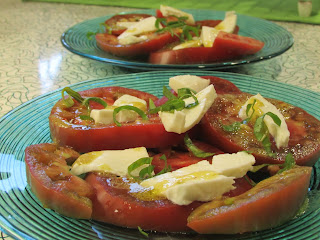While researching the background of this fruit, I learned that the name kiwi is has been shortened from its official name: kiwifruit. Most people also assume that kiwis must be from New Zealand. They are actually originally native to northern China where they were declared the National Fruit of China and called "yáng táo." Seeds were taken back to New Zealand where they first fruited in 1910. Twenty years later, they were becoming popular in New Zealand where they were called Chinese Gooseberry. During the WWII years, "Chinese Gooseberry" was too political so it was named "melonette" for a brief time. Then a New Zealand grower and exporter dubbed it kiwifruit in 1959; after the New Zealand bird, kiwi (both small, brown, and furry).
This dressing is super easy to make and is quite unique. Tasting right after its made reveals a lot of complexity with many different flavors working quite well together.
Once you add it as a dressing on a salad you will find that it's a unique, clean, peppery, tangy dressing that is unlike typical dressings you've had.
 Kiwi Apple Dressing:
Kiwi Apple Dressing:
Ingredients:
- 2 Tbsp. apple cider vinegar
- 2 Tbsp. apple juice
- 1 Tbsp. olive oil
- 1 Tbsp. water
- 1/2 teaspoon salt
- 1/2 teaspoon sugar
- 1/4 teaspoon freshly cracked pepper
- 1/4 teaspoon hot pepper sauce (I used Crystal)
- 3 kiwifruit, peeled and cut into chunks
- 1 clove garlic, minced
Refrigerate dressing in an airtight container for up to five days. Stir well before using.












.JPG)
.JPG)
.JPG)










.jpg)
